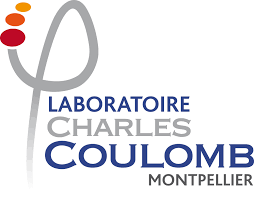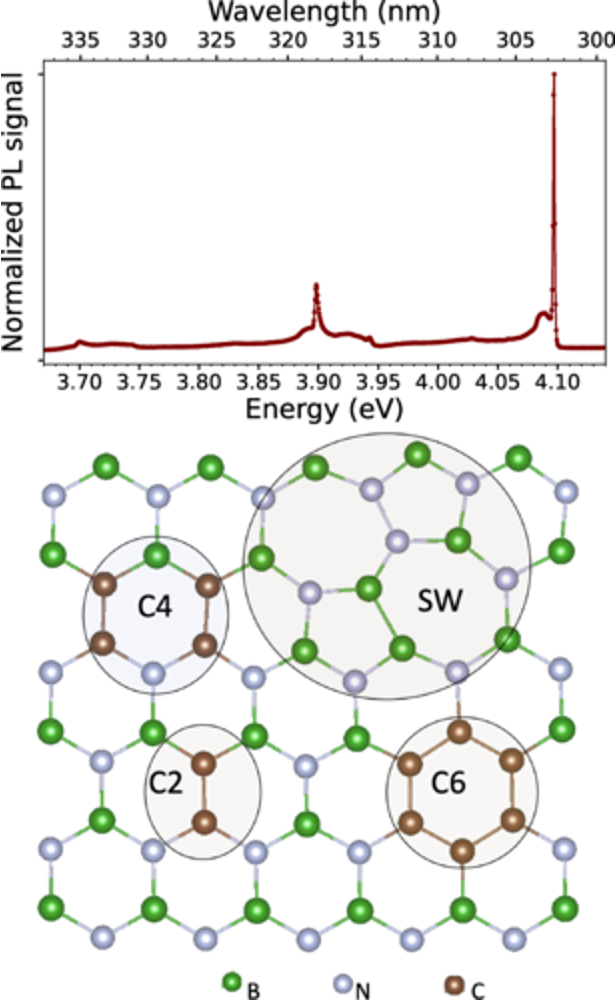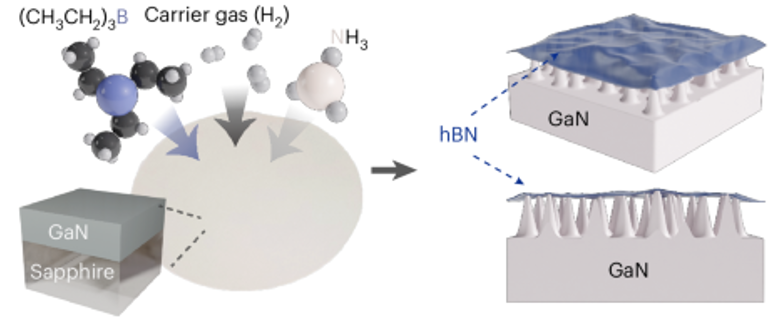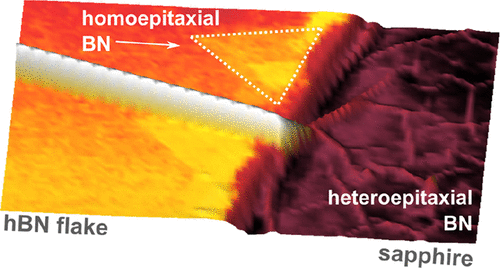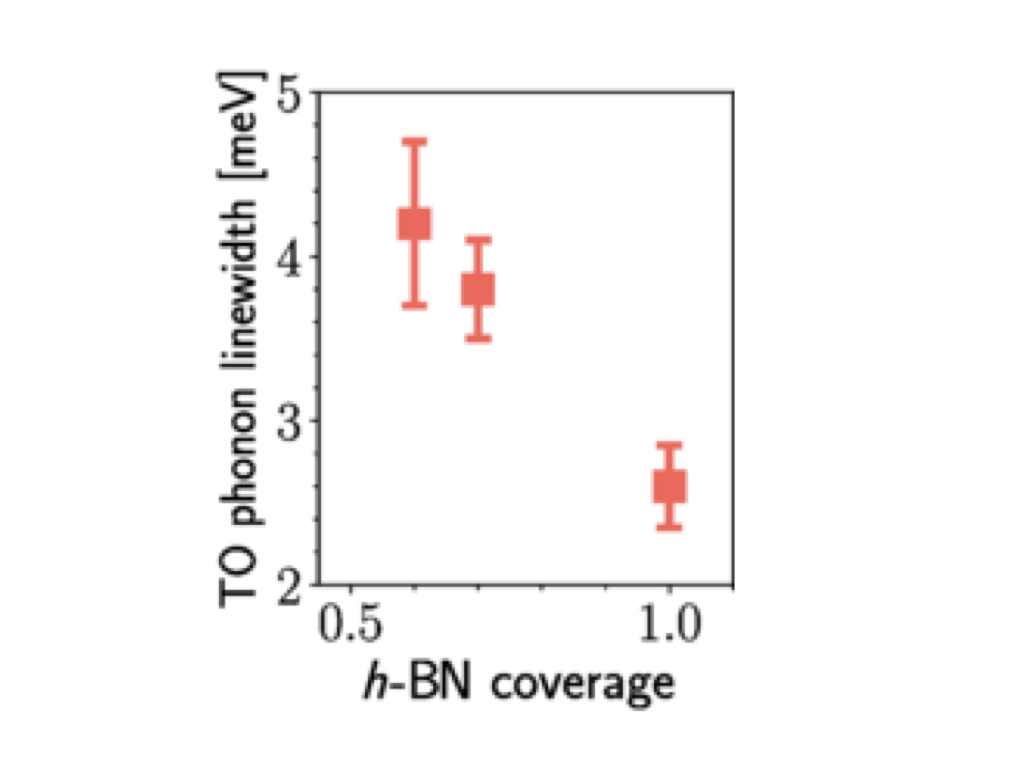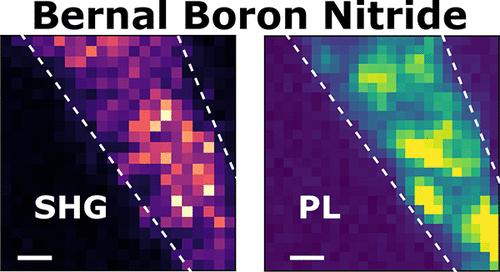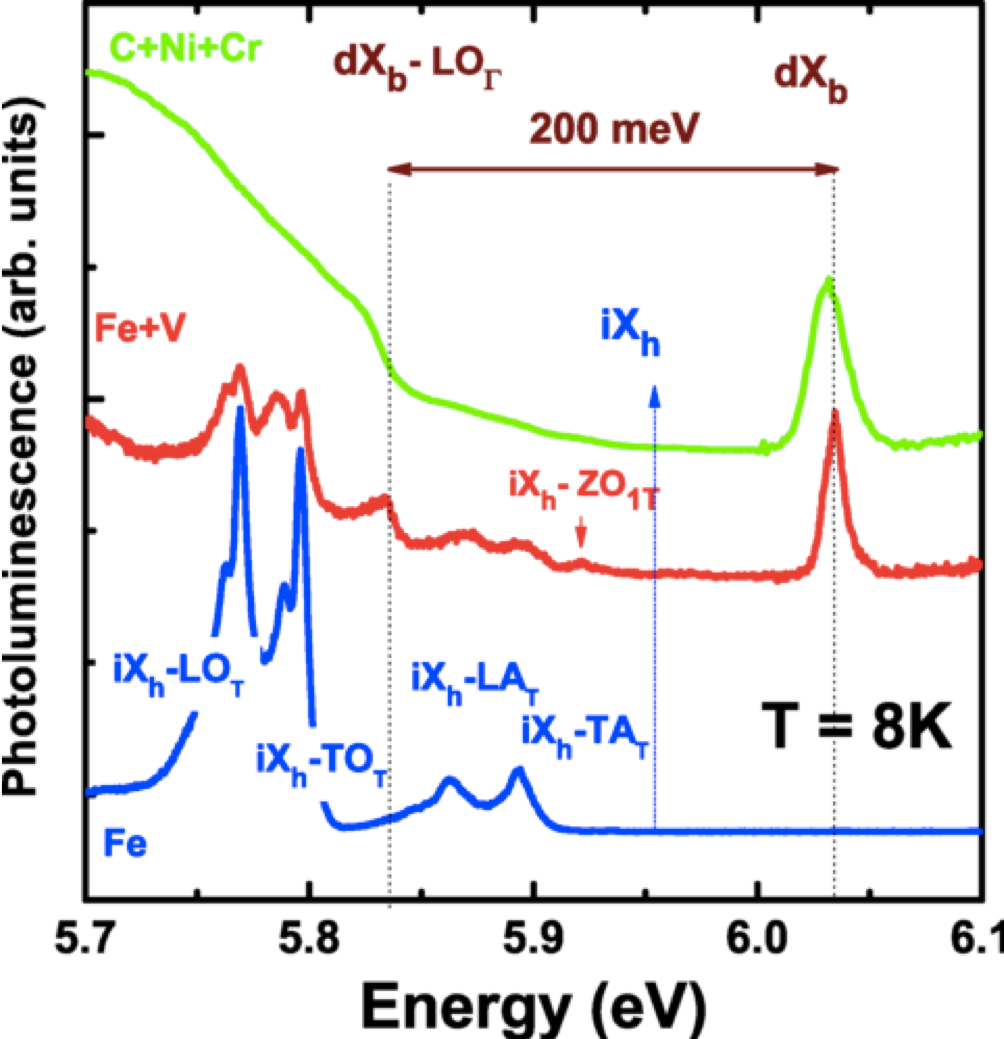Ultrawide-bandgap semiconductors for deep-UV optoelectronics
contacts:
Guillaume CASSABOIS
For more than seven decades, hexagonal boron nitride (hBN) has been used as an inert and thermally stable ceramic. The growth of high-quality hBN crystals in 2004 renewed interest in this material. Recent research has revealed that this two-dimensional material exhibits a unique combination of optical properties, spanning from the mid-infrared to the deep ultraviolet, paving the way for new photonic functionalities.
Our research activities focus on the optoelectronic properties of hBN, particularly in the deep ultraviolet (UV-C, λ ~200 nm) spectral range. This crystal exhibits a high internal quantum efficiency, comparable to that observed in direct-bandgap semiconductors, even though its bandgap is indirect—a feature we established in our early studies on this material. This apparent contradiction is closely related to the layered structure of this semiconductor, which gives rise to flat electronic bands responsible for the giant oscillator strength of excitonic transitions.
Thanks to our scanning, achromatic, diffraction-limited optical microscope operating down to the UV-C spectral range (λ ~200 nm), we have extended our investigations both to boron nitride monolayers (either exfoliated from bulk crystals or epitaxially grown on graphite substrates) and to the various hBN polytypes with AB or AA stacking. At present, we are actively studying the rhombohedral (rBN) crystalline phase, which exhibits new functionalities compared to the canonical AA′ stacking of hBN.

Honeycomb lattice of hBN
SOME RECENT PUBLICATIONS
Isotope Substitution and Polytype Control for Point Defects Identification: The Case of the Ultraviolet Color Center in Hexagonal Boron Nitride
J. Plo, A. Pershin, S. Li, T. Poirier, E. Janzen, H. Schutte, M. Tian, M. Wynn, S. Bernard, A. Rousseau, A. Ibanez, P. Valvin, W. Desrat, T. Michel, V. Jacques, B. Gil, A. Kaminska, N. Wan, J. H. Edgar, A. Gali, and G. Cassabois
Wafer-scale AA-stacked hexagonal boron nitride grown on a GaN substrate
S. Moon, O. F. N. Okello, A. Rousseau, C.-W. Choi, Y. Kim, Y. Park, J. Kim, J. Kim, M. Kim, P. Valvin, J. Cho, K. Watanabe, T. Taniguchi, H. Y. Jeong, G. Fugallo, W. Desrat, F. Ding, J.D. Lee, B. Gil, G. Cassabois, S.-Y. Choi, and J. K. Kim
Homoepitaxy of Boron Nitride on exfoliated Hexagonal Boron Nitride flakes
J. Binder, A. K. Dabrowska, M. Tokarczyk, A. Rousseau, P. Valvin, R. Bozek, K. Nogajewski, G. Kowalski, W. Pacuski, B. Gil, G. Cassabois, R. Stepniewski, and A. Wysmolek
Exciton and Phonon Radiative Linewidths in Monolayer Boron Nitride
G. Cassabois, G. Fugallo, C. Elias, P. Valvin, A. Rousseau, B. Gil, A. Summerfield, C. J. Mellor, T. S. Cheng, L. Eaves, C. T. Foxon, P. H. Beton, M. Lazzeri, A. Segura, and S. V. Novikov
Bernal Boron Nitride Crystals Identified by Deep-Ultraviolet Cryomicroscopy
A. Rousseau, P. Valvin, W. Desrat, L. Xue, J. Li, J. H. Edgar, G. Cassabois and B. Gil
Flat Bands and Giant Light-Matter Interaction in Hexagonal Boron Nitride
C. Elias, G. Fugallo, P. Valvin, C. L’Henoret, J. Li, J. H. Edgar, F. Sottile, M. Lazzeri, A. Ouerghi, B. Gil, and G. Cassabois
Determination of the optical bandgap of the Bernal and rhombohedral boron nitride polymorphs
A. Rousseau, M. Moret, P. Valvin, W. Desrat, J. Li, E. Janzen, L. Xue, J. H. Edgar, G. Cassabois and B. Gil
FUNDINGS

DOPALGAN, Hetero-BNC, BONASPE, BIRD




